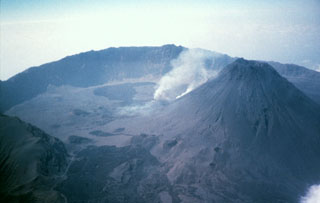Report on Fogo (Cabo Verde) — 26 November-2 December 2014
Smithsonian Institution / US Geological Survey
Weekly Volcanic Activity Report, 26 November-2 December 2014
Managing Editor: Sally Sennert.
Please cite this report as:
Global Volcanism Program, 2014. Report on Fogo (Cabo Verde) (Sennert, S, ed.). Weekly Volcanic Activity Report, 26 November-2 December 2014. Smithsonian Institution and US Geological Survey.
Fogo
Cabo Verde
14.95°N, 24.35°W; summit elev. 2829 m
All times are local (unless otherwise noted)
According to news articles the eruption from Fogo's Pico cone inside the Cha Caldera continued during 26 November-2 December. In the morning of 30 November the eruption intensified; lava traveled at a rate of 20 m/hour and caused the closure of the only alternative route between the national park and Portela, the main town in the caldera. Authorities warned all residents in the caldera to evacuate. Lava destroyed almost 25 homes, a large area of agricultural land, the Parque Natural do Fogo museum, and other infrastructure. By 2 December there were two lava fronts. After about 24 hours of minimal advancement, the rate of advancement increased; lava overtook several more houses, a school, and a hotel.
Geological Summary. The island of Fogo consists of a single massive stratovolcano that is the most prominent of the Cape Verde Islands. The roughly circular 25-km-wide island is truncated by a large 9-km-wide caldera that is breached to the east and has a headwall 1 km high. The caldera is located asymmetrically NE of the center of the island and was formed as a result of massive lateral collapse of the older Monte Armarelo edifice. A very youthful steep-sided central cone, Pico, rises more than 1 km above the caldera floor to about 100 m above the rim. Pico, which is capped by a 500-m-wide, 150-m-deep summit crater, was apparently in almost continuous activity from the time of Portuguese settlement in 1500 CE until around 1760. Later lava flows, some from vents on the caldera floor, reached the eastern coast below the breached caldera.
Sources: Observador, Fogo News

